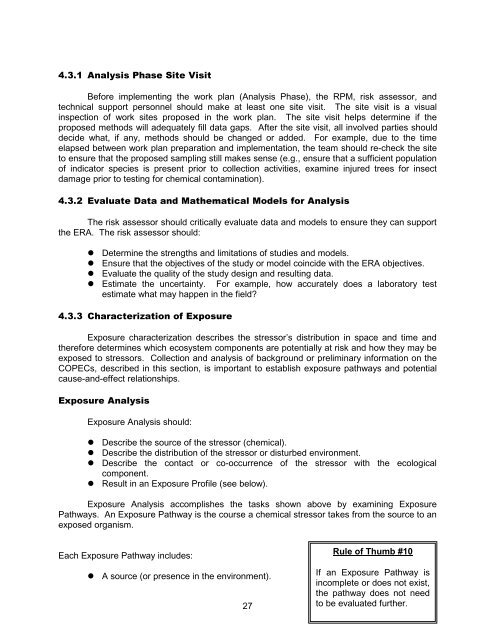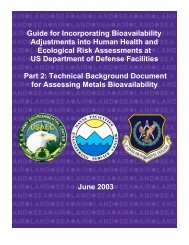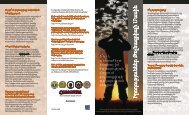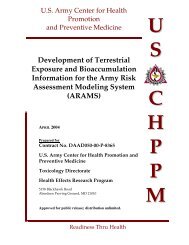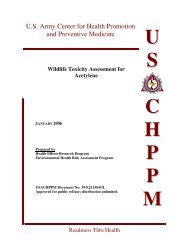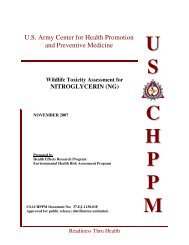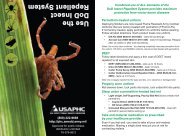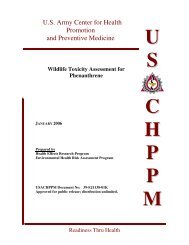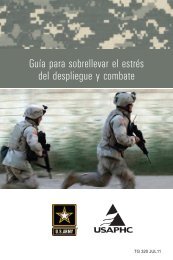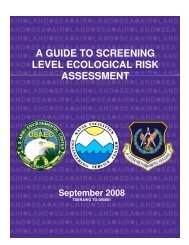Tri-Service Remedial Project Manager's Guide for Ecological Risk ...
Tri-Service Remedial Project Manager's Guide for Ecological Risk ...
Tri-Service Remedial Project Manager's Guide for Ecological Risk ...
Create successful ePaper yourself
Turn your PDF publications into a flip-book with our unique Google optimized e-Paper software.
$QDO\VLV3KDVH6LWH9LVLWBe<strong>for</strong>e implementing the work plan (Analysis Phase), the RPM, risk assessor, andtechnical support personnel should make at least one site visit. The site visit is a visualinspection of work sites proposed in the work plan. The site visit helps determine if theproposed methods will adequately fill data gaps. After the site visit, all involved parties shoulddecide what, if any, methods should be changed or added. For example, due to the timeelapsed between work plan preparation and implementation, the team should re-check the siteto ensure that the proposed sampling still makes sense (e.g., ensure that a sufficient populationof indicator species is present prior to collection activities, examine injured trees <strong>for</strong> insectdamage prior to testing <strong>for</strong> chemical contamination). (YDOXDWH'DWDDQG0DWKHPDWLFDO0RGHOVIRU$QDO\VLVThe risk assessor should critically evaluate data and models to ensure they can supportthe ERA. The risk assessor should:l Determine the strengths and limitations of studies and models.l Ensure that the objectives of the study or model coincide with the ERA objectives.l Evaluate the quality of the study design and resulting data.l Estimate the uncertainty. For example, how accurately does a laboratory testestimate what may happen in the field? &KDUDFWHUL]DWLRQRI([SRVXUHExposure characterization describes the stressor’s distribution in space and time andthere<strong>for</strong>e determines which ecosystem components are potentially at risk and how they may beexposed to stressors. Collection and analysis of background or preliminary in<strong>for</strong>mation on theCOPECs, described in this section, is important to establish exposure pathways and potentialcause-and-effect relationships.([SRVXUH$QDO\VLVExposure Analysis should:l Describe the source of the stressor (chemical).l Describe the distribution of the stressor or disturbed environment.l Describe the contact or co-occurrence of the stressor with the ecologicalcomponent.l Result in an Exposure Profile (see below).Exposure Analysis accomplishes the tasks shown above by examining ExposurePathways. An Exposure Pathway is the course a chemical stressor takes from the source to anexposed organism.Each Exposure Pathway includes:l A source (or presence in the environment).27Rule of Thumb #10If an Exposure Pathway isincomplete or does not exist,the pathway does not needto be evaluated further.


